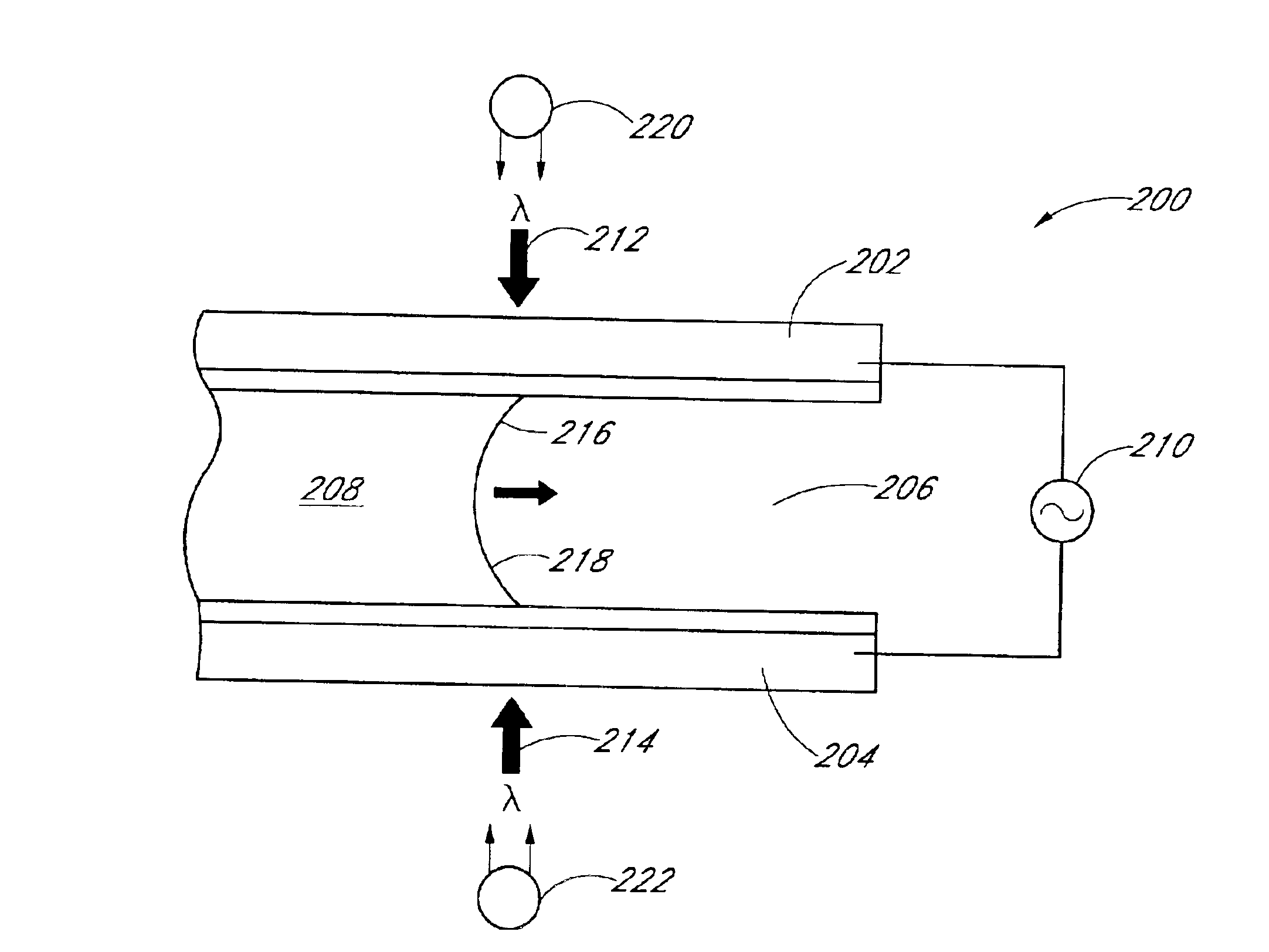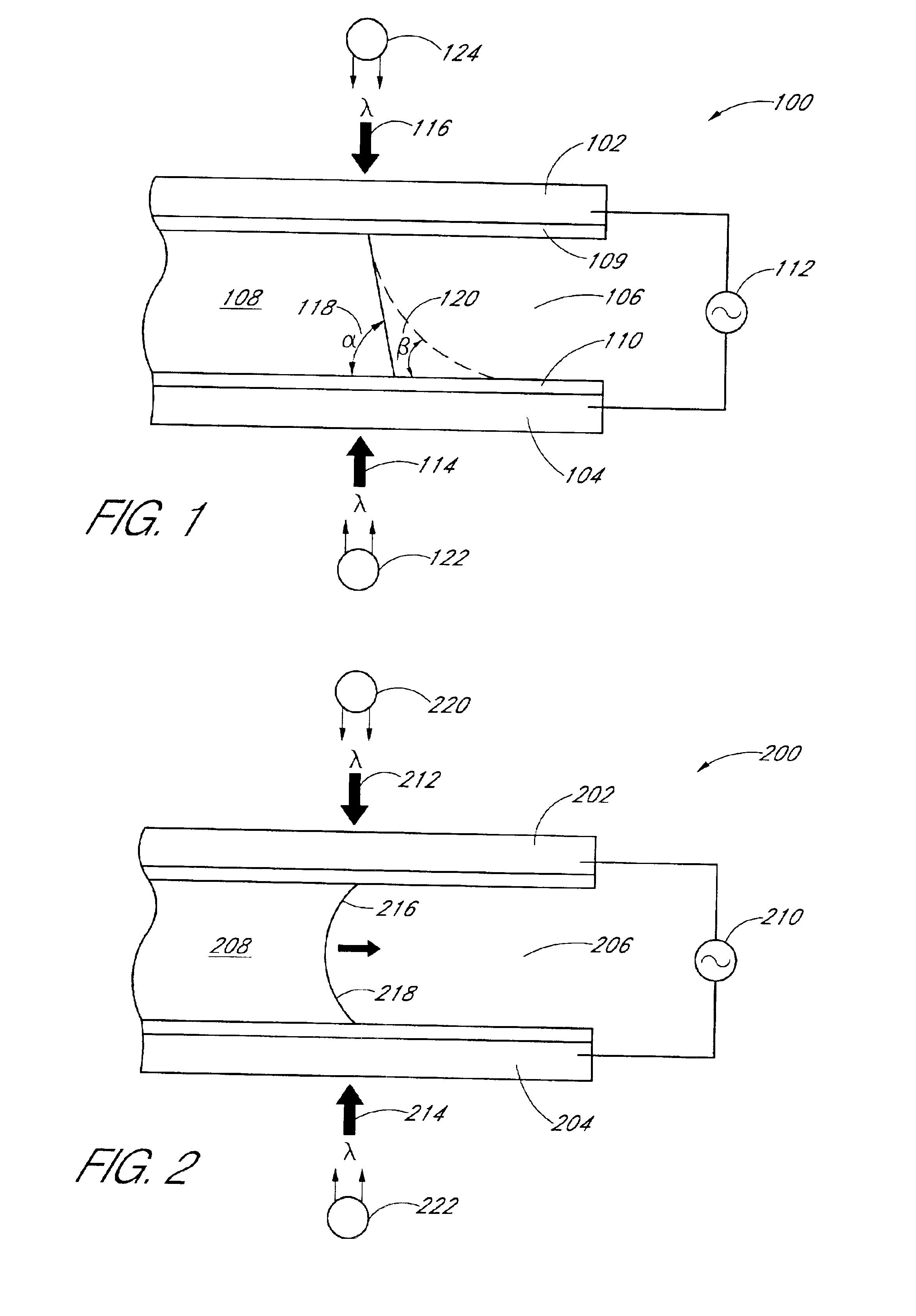Systems and methods for optical actuation of microfluidics based on opto-electrowetting
a microfluidic and opto-electrowetting technology, applied in the field of manipulation or actuation of droplets in a microfluidic circuit, can solve the problems of difficult to switch in an array, large and expensive control electrode arrays, and large complexity of micro-machined pumps and valves
- Summary
- Abstract
- Description
- Claims
- Application Information
AI Technical Summary
Benefits of technology
Problems solved by technology
Method used
Image
Examples
Embodiment Construction
[0030]Although this invention will be described in terms of certain preferred embodiments, other embodiments that are apparent to those of ordinary skill in the art, including embodiments that do not provide all of the benefits and features set forth herein, are also within the scope of this invention. Accordingly, the scope of the invention is defined only by reference to the appended claims.
[0031]Embodiments of the invention advantageously provide the manipulation or actuation of droplets in a microfluidic circuit that can be relatively inexpensively produced. Embodiments of the invention manipulate droplets by controlling the electro-wetting characteristics of a surface with light, thereby inducing a gradient in the surface tension of a droplet. The gradient in the surface tension propels the droplet by capillary force.
[0032]Embodiments of the invention thereby permit the manipulation of droplets without relatively intricate and expensive micro-mechanical devices, such as micro-m...
PUM
 Login to View More
Login to View More Abstract
Description
Claims
Application Information
 Login to View More
Login to View More - R&D
- Intellectual Property
- Life Sciences
- Materials
- Tech Scout
- Unparalleled Data Quality
- Higher Quality Content
- 60% Fewer Hallucinations
Browse by: Latest US Patents, China's latest patents, Technical Efficacy Thesaurus, Application Domain, Technology Topic, Popular Technical Reports.
© 2025 PatSnap. All rights reserved.Legal|Privacy policy|Modern Slavery Act Transparency Statement|Sitemap|About US| Contact US: help@patsnap.com



